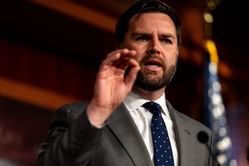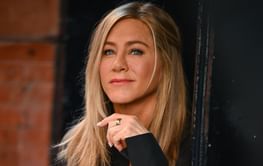
McDonald’s purple-colored mascot, Grimace, represents a taste bud. That's according to Brian Bates, who recently won the Outstanding Manager of the Year award for his management during the pandemic at a McDonald's location in Windsor, Canada.
In an interview with CBC News, Bates discussed the achievement and clarified any misunderstandings about Grimace's identity. "He is an enormous taste bud, but a tastebud nonetheless," Bates told CBC. When you consider what McDonald's has previously said about Grimace, Bates' revelation is confusing. In a tweet from 2012, the company's official Twitter account discussed Grimace's identity and suggested that he might be both the "embodiment of a milkshake and a taste bud.”
In 2012, Roy Bergold, a former chief creative officer at McDonald's, wrote a column for QSR Magazine, a trade magazine for the fast-food and fast-casual sectors, in which he discussed "Evil Grimace." The original concept for the mascot was a scaly, multi-armed milkshake demon named Evil Grimace who lived in McDonaldland with Ronald McDonald, Hamburglar, and the Fry Kids instead of a helpless purple blob.
According to Mashed, Grimace as we know him today first appeared in a 1972 McDonald's commercial. However, Evil Grimace hasn't completely disappeared from the internet; you can still find “Evil Grimace” merchandise on eBay and watch him in action, arms laden with milkshakes and Cokes, in old McDonald's commercials on YouTube, though they are a little spooky.
Who is Ronald McDonald?
The primary mascot of the McDonald's fast-food restaurant chain is a clown named Ronald McDonald. Along with his friends Mayor McCheese, the Hamburglar, Grimace, Birdie the Early Bird, and the Fry Kids, he lives in the made-up world of McDonaldland. Many people have full-time jobs in addition to appearing as Ronald, visiting kids in hospitals, and going to events frequently.

At its peak, there may have been as many as 300 full-time clowns working at McDonald's restaurants. Additionally, there are Ronald McDonald Houses where parents can spend the night with their ill children while they receive treatment at nearby chronic care facilities.
Who is the founder of the McDonald’s Corporation?
The McDonald Brothers, two American businessmen who founded the fast food chain McDonald's, were Richard McDonald (February 19, 1909–July 14, 1998) and Maurice McDonald (December 11, 1902–December 11, 1971). They established the Speedee Service System to prepare their meals at the original McDonald's restaurant, which they opened in San Bernardino, California, in 1940. This process would eventually become the industry standard for fast food.
Ray Kroc, a milkshake mixer salesman for Prince Castle, became interested in the brothers. In 1954, Kroc paid a visit to their San Bernardino, California, restaurant after they had acquired eight of his Multi-Mixers. Kroc was employed by the McDonald brothers as their franchise agent that year. The McDonald brothers received 0.5 percent of the gross sales, leaving Kroc with 1.9 percent.

The McDonald brothers' desire to keep a small number of restaurants irritated Kroc. Despite Kroc's repeated requests, the brothers never sent any official letters formally authorizing the changes in the chain, though they frequently told him that he couldn't make changes to things like the original blueprint. In order to ensure that each brother received $1 million after taxes, Kroc calculated the purchase price of the business at $2.7 million in 1961.
Kroc became irritated when the brothers refused to give him the real estate and ownership of the original San Bernardino location. The brothers had informed Kroc that they would be handing over the business, along with all of its assets, to the original staff. In response to the brothers' failure to protect their ownership of the name, the original McDonald's was renamed "The Big M," and Kroc later opened a new McDonald's restaurant close by.
Six years later, "The Big M" was shut down. There is no proof of this claim beyond a claim made by a nephew of the McDonald brothers. It is claimed that as part of the buyout, Kroc promised, based on a handshake agreement, to continue the annual 1% royalty of the original agreement. No brother publicly expressed dissatisfaction with the deal. Richard McDonald reportedly stated that he had no regrets when discussing the buyout.









